Studies of Parylene/Silicone-Coated Soft Bio-Implantable Optoelectronic Device
Abstract
:1. Introduction
2. Materials and Methods
2.1. Fabrication Procedure
2.2. Measurement and Analysis
3. Results and Discussion
3.1. Fabricated Device
3.2. Optical Characteristics
3.3. Mechanical Stability
3.4. Water Barrier Properties
3.5. Wireless Operation
4. Conclusions
Supplementary Materials
Funding
Conflicts of Interest
Appendix A
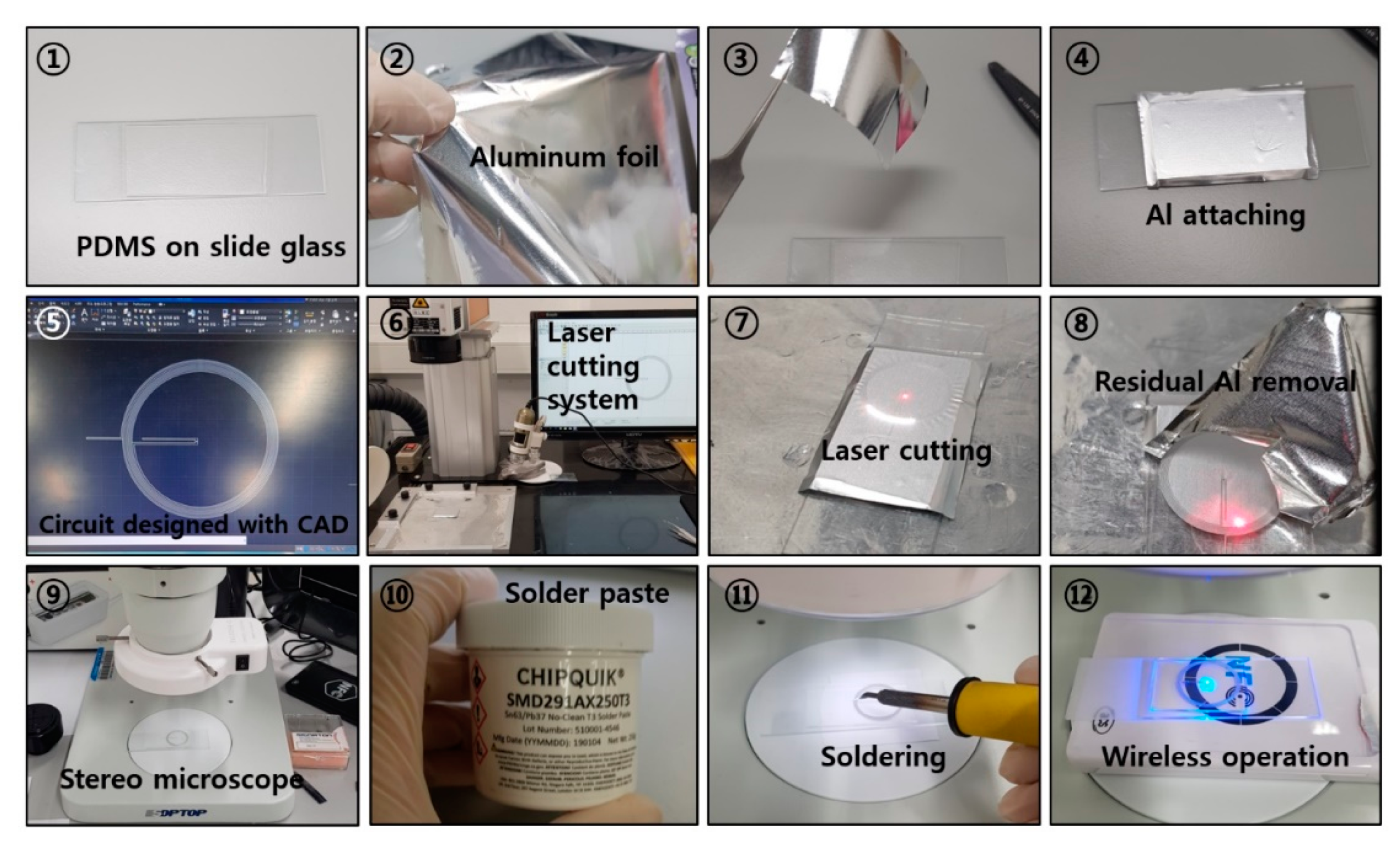
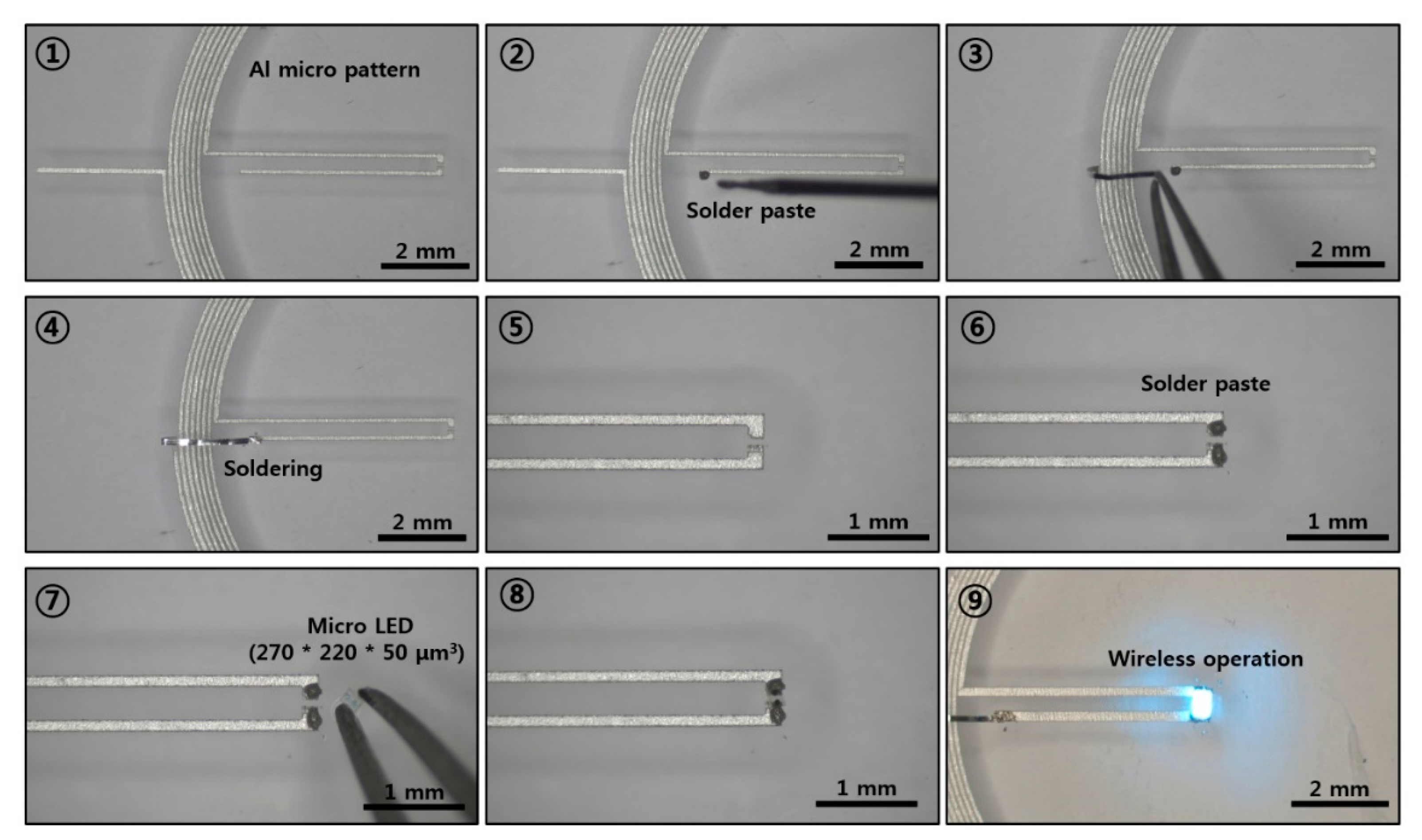
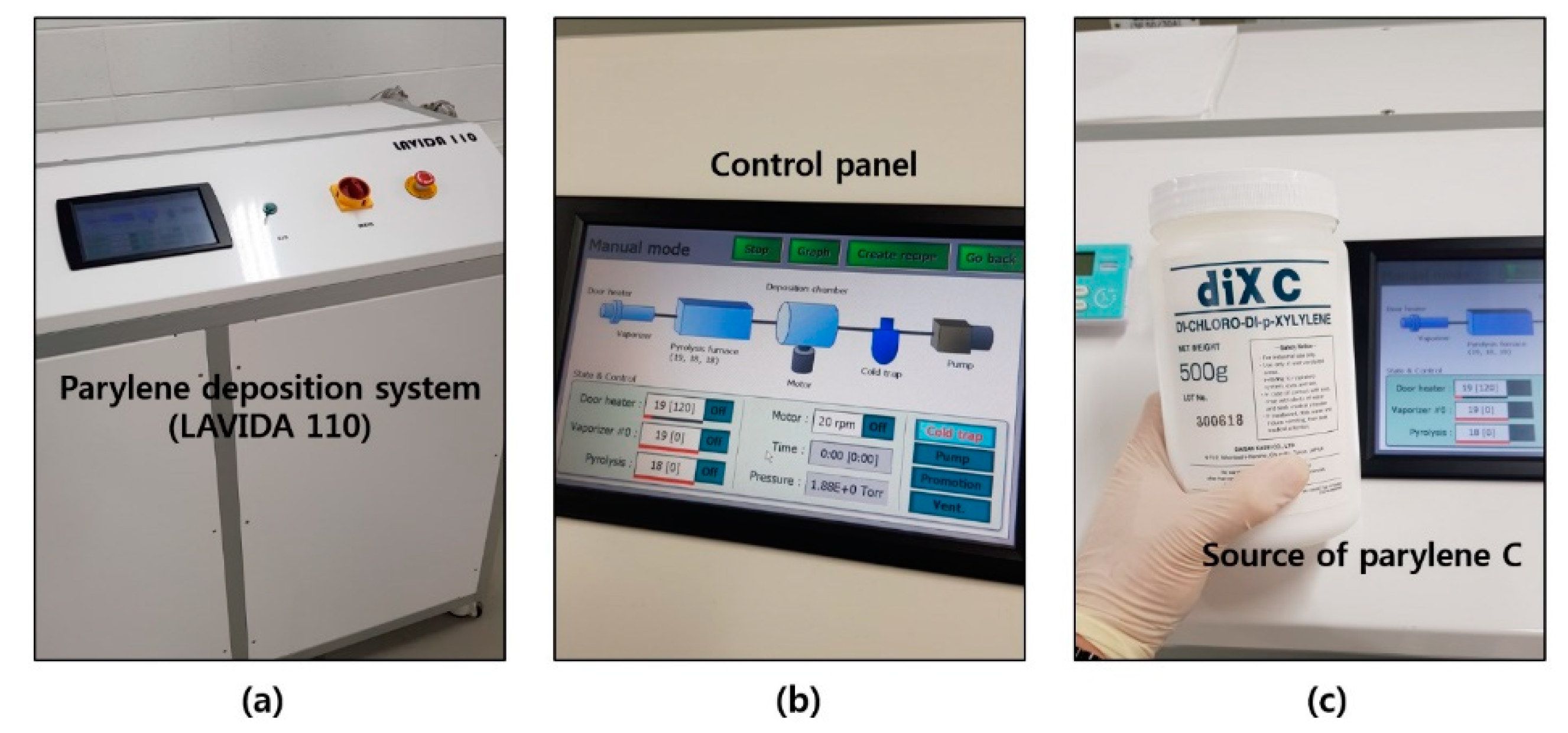
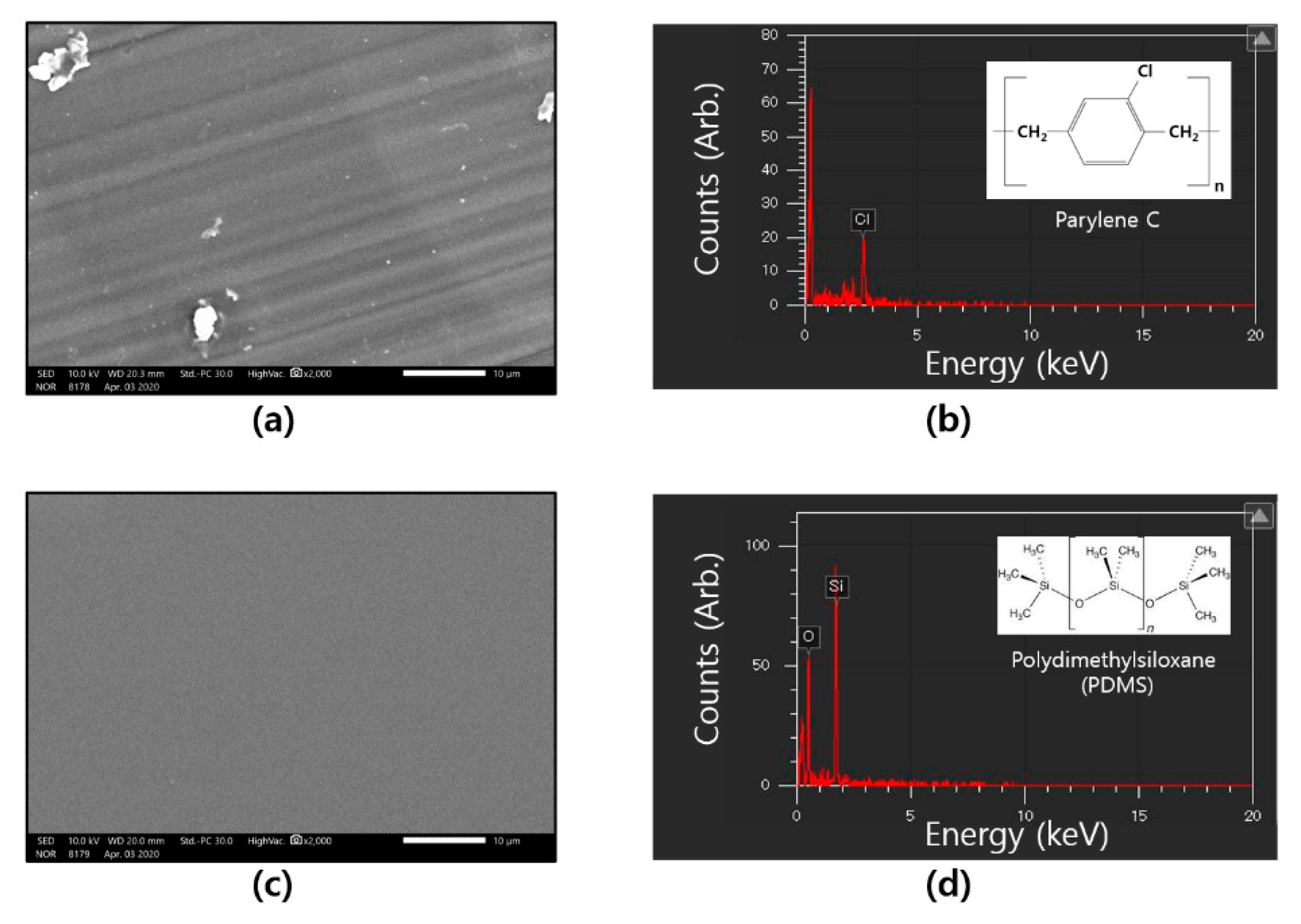
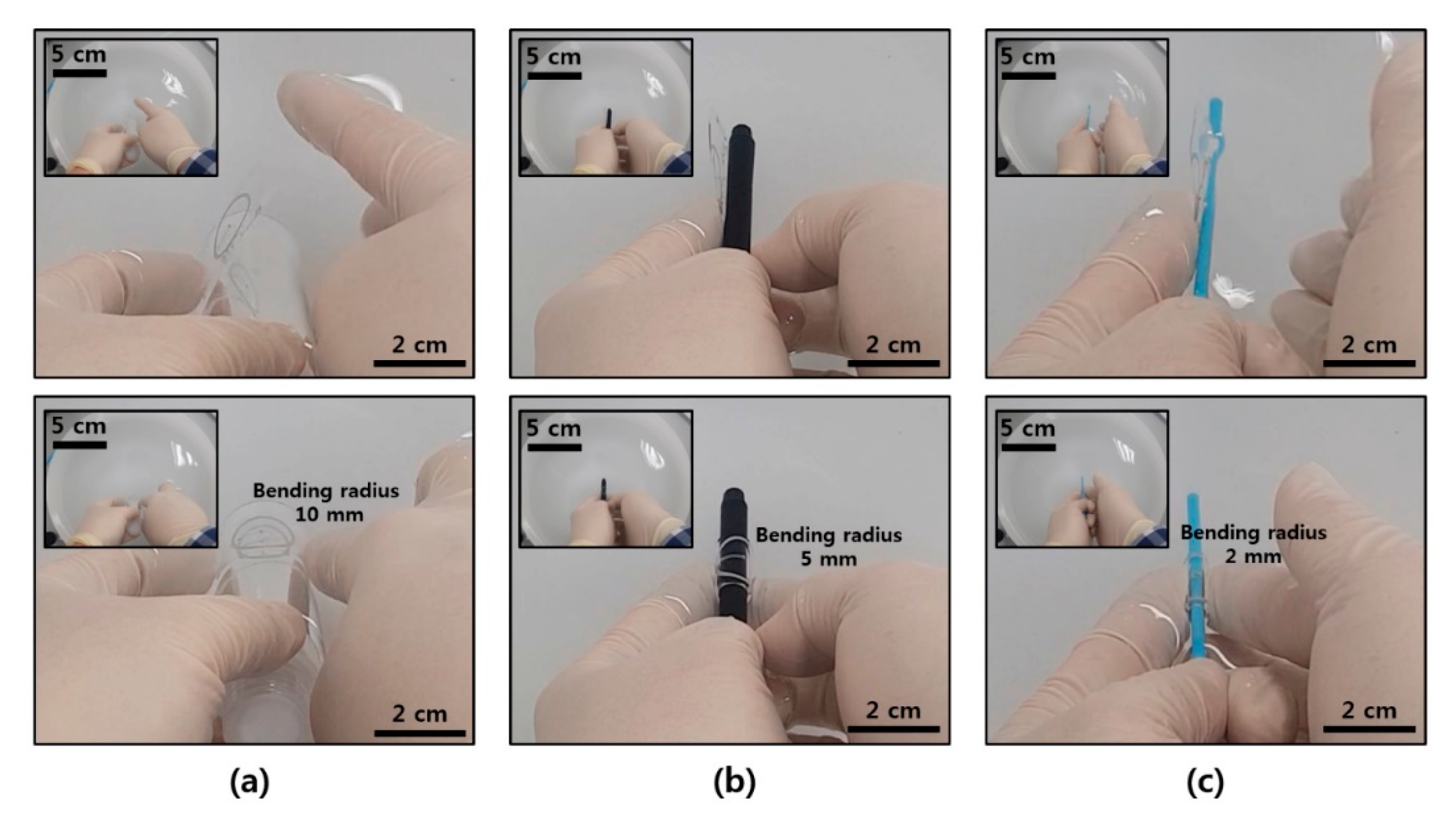
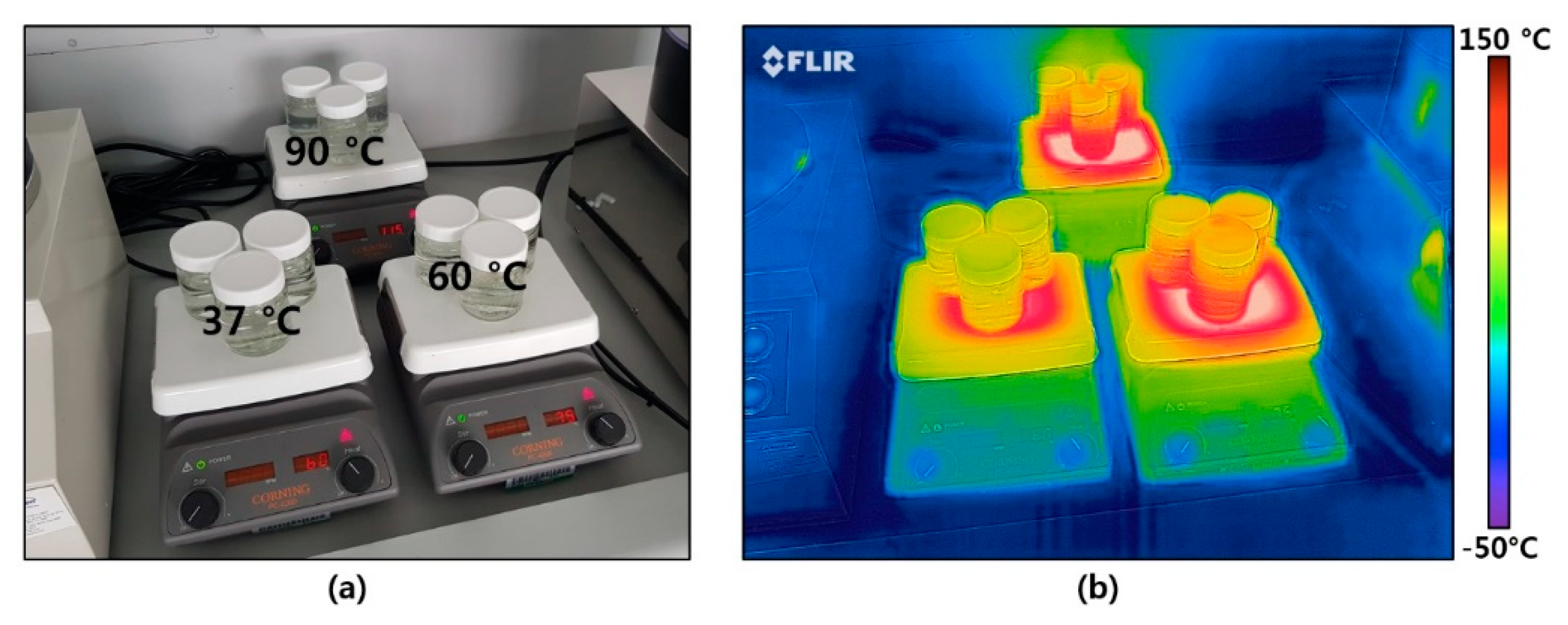
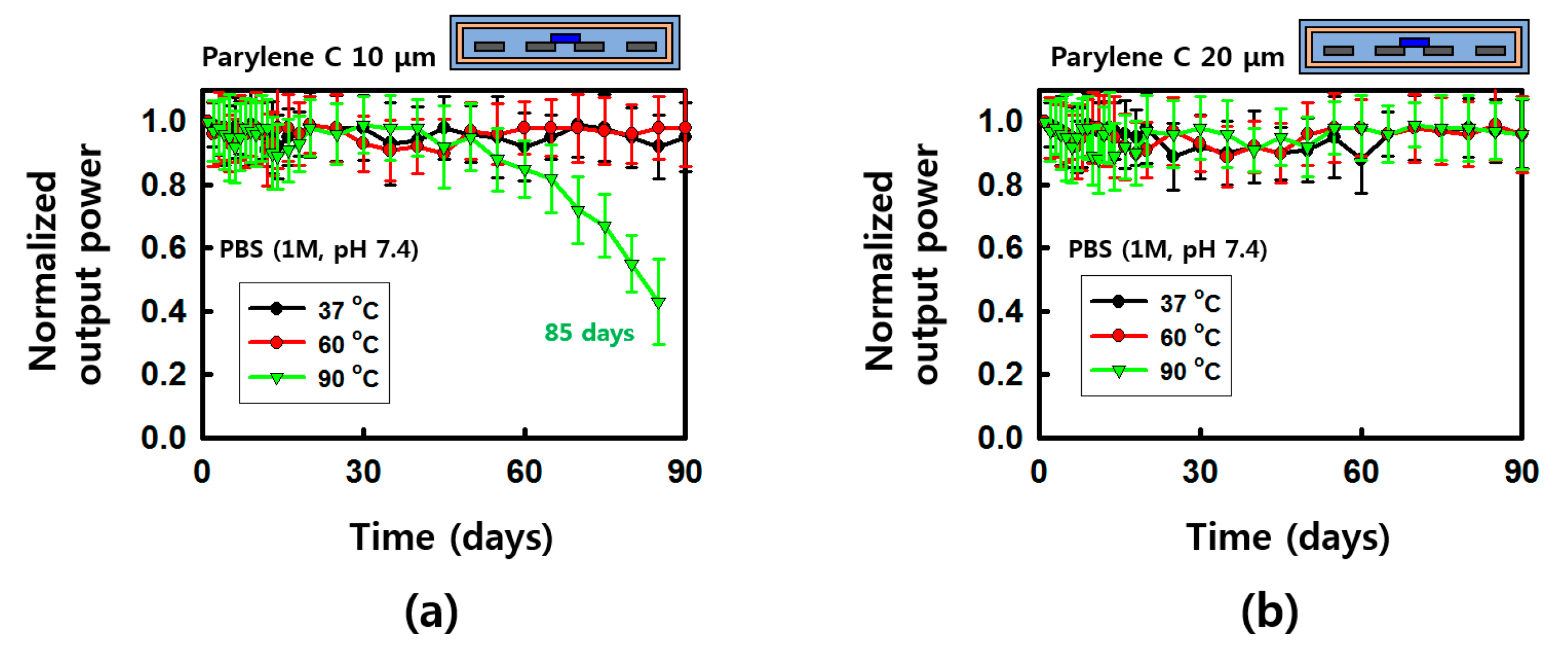
References
- Boyden, E.S.; Zhang, F.; Bamberg, E.; Nagel, G.; Deisseroth, K. Millisecond-timescale, genetically targeted optical control of neural activity. Nat. Neurosci. 2005, 8, 1263–1268. [Google Scholar] [CrossRef] [PubMed]
- Deisseroth, K. Optogenetics. Nat. Methods 2011, 8, 26–29. [Google Scholar] [CrossRef] [PubMed]
- Fenno, L.; Yizhar, O.; Deisseroth, K. The development and application of optogenetics. Annu. Rev. Neurosci. 2011, 34, 389–412. [Google Scholar] [CrossRef] [PubMed]
- Kim, T.I.; McCall, J.G.; Jung, Y.H.; Huang, X.; Siuda, E.R.; Li, Y.; Song, J.; Song, Y.M.; Pao, H.A.; Kim, R.-H.; et al. Injectable, cellular-scale optoelectronics with applications for wireless optogenetics. Science 2013, 340, 211–216. [Google Scholar] [CrossRef] [PubMed] [Green Version]
- Park, S.-I.; Brenner, D.S.; Shin, G.; Morgan, C.D.; Copits, B.A.; Chung, H.U.; Pullen, M.Y.; Noh, K.N.; Davidson, S.; Oh, S.J.; et al. Soft, stretchable, fully implantable miniaturized optoelectronic systems for wireless optogenetics. Nat. Biotechnol. 2015, 33, 1280–1286. [Google Scholar] [CrossRef] [PubMed] [Green Version]
- Montgomery, K.L.; Yeh, A.J.; Ho, J.S.; Tsao, V.; Mohan Iyer, S.; Grosenick, L.; Ferenczi, E.A.; Tanabe, Y.; Deisseroth, K.; Delp, S.L.; et al. Wirelessly powered, fully internal optogenetics for brain, spinal and peripheral circuits in mice. Nat. Methods 2015, 12, 969–974. [Google Scholar] [CrossRef] [PubMed] [Green Version]
- Jeong, J.-W.; McCall, J.G.; Shin, G.; Zhang, Y.; Al-Hasani, R.; Kim, M.; Li, S.; Sim, J.Y.; Jang, K.-I.; Shi, Y.; et al. Wireless optofluidic systems for programmable in vivo pharmacology and optogenetics. Cell 2015, 162, 662–674. [Google Scholar] [CrossRef] [PubMed] [Green Version]
- Shin, G.; Gomez, A.M.; Al-Hasani, R.; Jeong, Y.R.; Kim, J.; Xie, Z.; Banks, A.; Lee, S.M.; Han, S.Y.; Yoo, C.J.; et al. Flexible near-field wireless optoelectronics as subdermal implants for broad applications in optogenetics. Neuron 2017, 93, 509–521. [Google Scholar] [CrossRef] [PubMed] [Green Version]
- Gutruf, P.; Krishnamurthi, V.; Vazquez-Guardado, A.; Xie, Z.; Banks, A.; Su, C.-J.; Xu, Y.; Haney, C.R.; Waters, E.A.; Kandela, I.; et al. Fully implantable optoelectronic systems for battery-free, multimodal operation in neuroscience research. Nat. Electron. 2018, 1, 652–660. [Google Scholar] [CrossRef]
- Mickle, A.D.; Won, S.M.; Noh, K.N.; Yoon, J.; Meacham, K.W.; Xue, Y.; McIlvried, L.A.; Copits, B.A.; Samineni, V.K.; Crawford, K.E. A wireless closed-loop system for optogenetic peripheral neuromodulation. Nature 2019, 565, 361–365. [Google Scholar] [CrossRef] [PubMed]
- Edward, E.S.; Kouzani, A.Z. A Closed-loop optogenetic stimulation device. Electronics 2020, 9, 96. [Google Scholar] [CrossRef] [Green Version]
- Kim, D.H.; Ahn, J.-H.; Choi, W.-M.; Kim, H.-S.; Kim, T.-H.; Song, J.; Huang, Y.Y.; Zhuangjian, L.; Chun, L.; Rogers, J.A. Stretchable and foldable silicon integrated circuits. Science 2008, 320, 507–511. [Google Scholar] [CrossRef] [PubMed] [Green Version]
- Weltman, A.; Yoo, J.; Meng, E. Flexible, penetrating brain probes enabled by advances in polymer microfabrication. Micromachines 2016, 7, 180. [Google Scholar] [CrossRef] [PubMed] [Green Version]
- Dhere, N.G. Flexible packaging for PV modules. Proc. SPIE 2008, 7048, 70480R. [Google Scholar]
- Zhang, K.; Yu, Q.; Zhu, L.; Liu, S.; Chi, Z.; Chen, X.; Zhang, Y.; Xu, J. The preparations and water vapor barrier properties of polyimide films containing amide moieties. Polymers 2017, 9, 677. [Google Scholar] [CrossRef] [PubMed] [Green Version]
- Coron, N.; Cuesta, C.; García, E.; Ginestra, C.; Girard, T.; de Marcillac, P.; Martínez, M.; Ortigoza, Y.; Ortiz de Solórzano, A.; Pobes, C. Response of parylene-coated NaI(Tl) scintillators at low temperature. EPJ Web Conf. 2014, 65, 02001. [Google Scholar] [CrossRef]

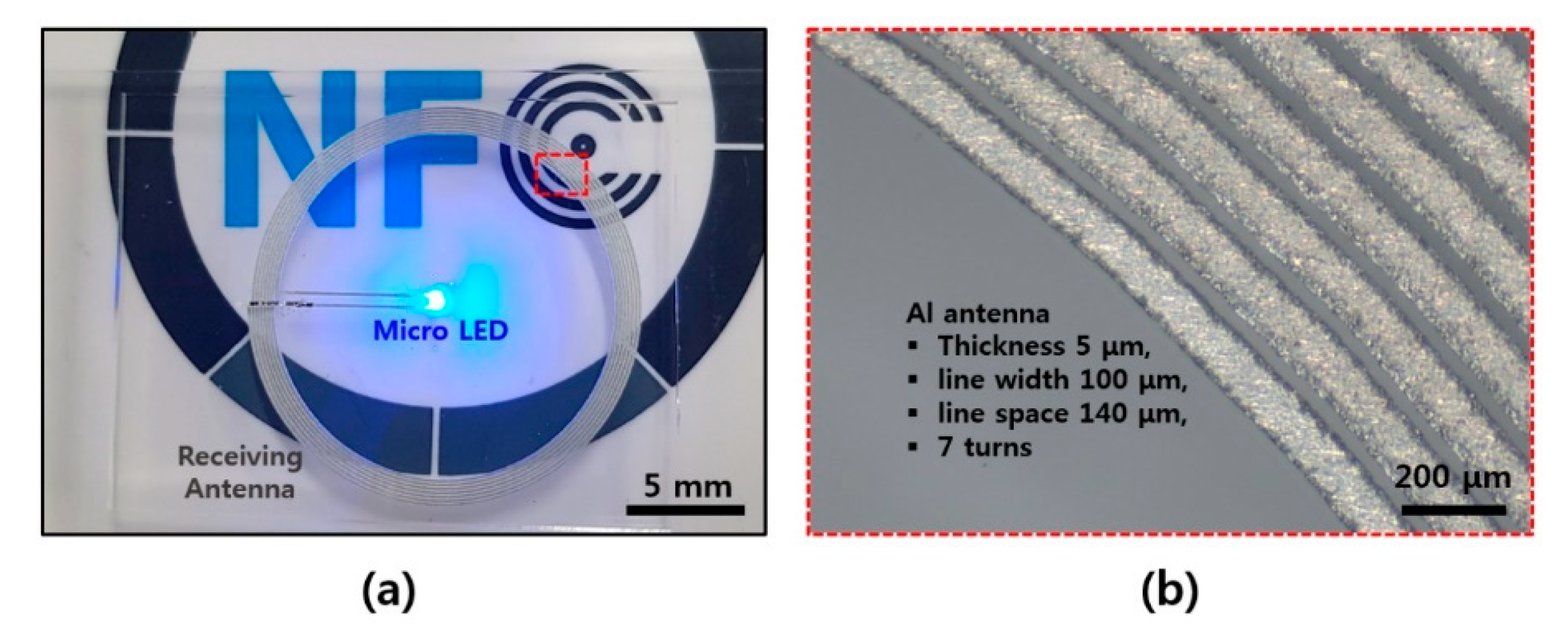


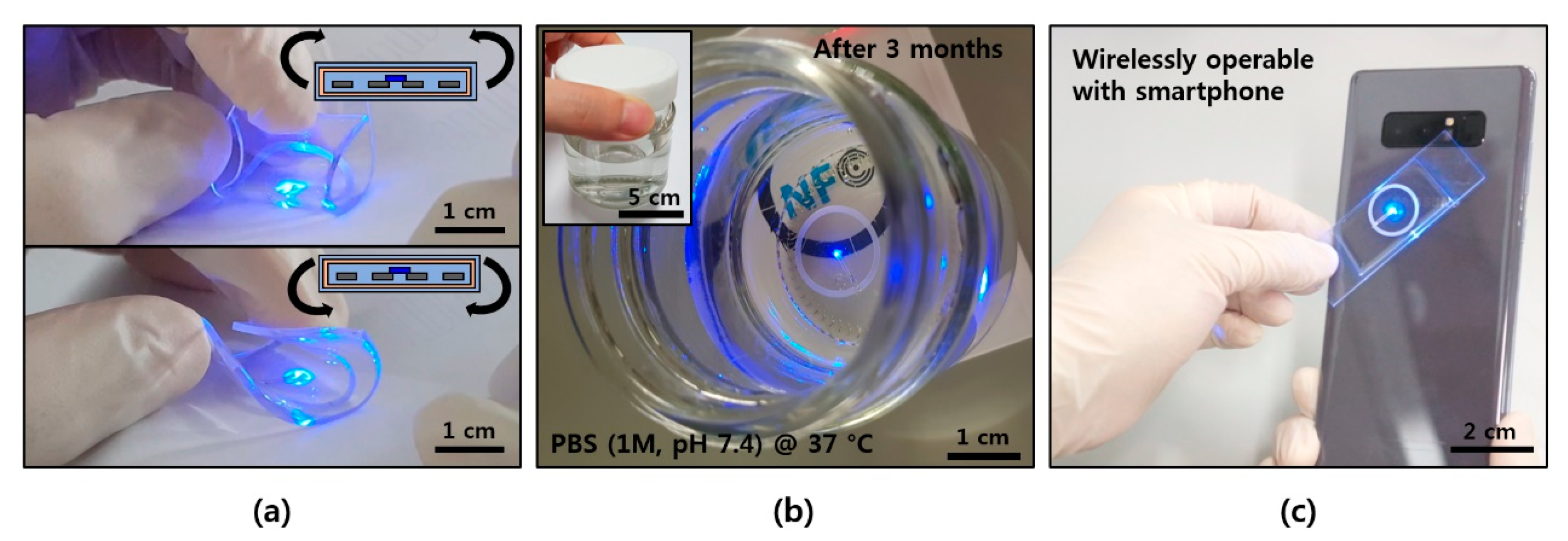
| Properties | Parylene C [13,14] | Polyimide [13,14,15] | SU-8 [13] | Polydimethylsiloxane [5,7,10,13,14] |
|---|---|---|---|---|
| Elastic modulus | ~3 GPa | 2‒9 GPa | ~4 GPa | <1 MPa |
| Mechanical rigidity | Rigid | Rigid | Rigid | Soft, Stretchable |
| Color | Clear | Yellowish, Opaque | Clear | Clear |
| Deposition method | Chemical Vapor Deposition | Solution coating | Solution coating | Solution coating |
| Process Temperature | Room Temperature (R.T.) | ~ 250 °C | ~150 °C | R.T. to 100 °C |
| WVTR 1 | ~0.4 | ~1.4 | ~1 | ~70 |
| Applications | Moisture and chemical barrier | Substrate needs high temperature process | Photoresist | Flexible and stretchable devices |
© 2020 by the author. Licensee MDPI, Basel, Switzerland. This article is an open access article distributed under the terms and conditions of the Creative Commons Attribution (CC BY) license (http://creativecommons.org/licenses/by/4.0/).
Share and Cite
Shin, G. Studies of Parylene/Silicone-Coated Soft Bio-Implantable Optoelectronic Device. Coatings 2020, 10, 404. https://doi.org/10.3390/coatings10040404
Shin G. Studies of Parylene/Silicone-Coated Soft Bio-Implantable Optoelectronic Device. Coatings. 2020; 10(4):404. https://doi.org/10.3390/coatings10040404
Chicago/Turabian StyleShin, Gunchul. 2020. "Studies of Parylene/Silicone-Coated Soft Bio-Implantable Optoelectronic Device" Coatings 10, no. 4: 404. https://doi.org/10.3390/coatings10040404
APA StyleShin, G. (2020). Studies of Parylene/Silicone-Coated Soft Bio-Implantable Optoelectronic Device. Coatings, 10(4), 404. https://doi.org/10.3390/coatings10040404





